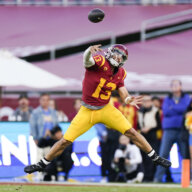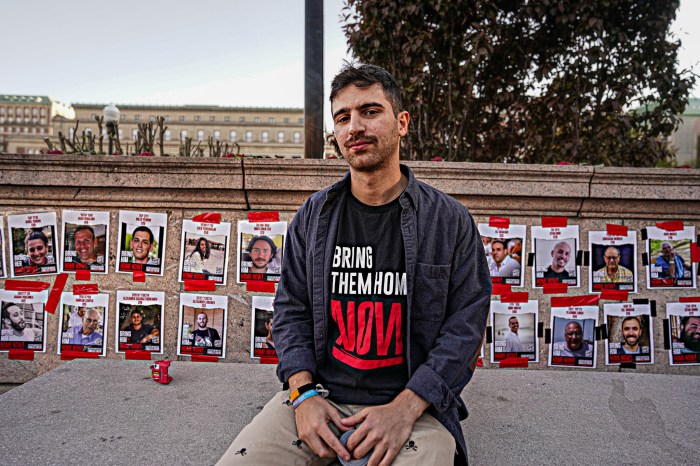The name Sheldon Adelson hasn’t been widely discussed during the presidential campaign, but the casino magnate – who comes in two spots below New York City Mayor Michael Bloomberg on the 2011 Forbes 400 list, ranking him the 12th wealthiest American – has been the largest single Super PAC donor during this election cycle, according to “Distorted Democracy: Big Money and Dark Money in the 2012 Elections,” a report released late last week by state consumer advocacy group PennPIRG and liberal think tank Demos.
Adelson donated $52.2 million to pro-Romney Super PACs, an amount that, while staggering, is only .21 percent of his total net worth. More than 322,000 average American families would need to donate the equivalent share of their wealth in order to match his contribution. “On Election Day, we’re all supposed to have an equal say,” Adam Lioz of Demos said. “But [this] week, a small group of millionaires and billionaires will have more influence than millions of middle class families.”
Adelson is not the only person whose deep pockets have extended his political reach far beyond that of the average citizen. In fact, the report found that in the wake of 2010’s Citizens United decision, in which the Supreme Court ruled that corporations and unions can make unlimited campaign expenditures, the amount raised by outside spending organizations has skyrocketed 400 percent since the 2008 election to reach a total of $1.11 billion between both campaigns.
Almost half of that money – $542.8 million – came from Super PACs, whose creation were enabled by the Citizens United decision. The independent, expenditure-only political action committees continue to receive the majority of their funding from a small number of wealthy individuals. “Big donors and secret spenders have been drowning out the rest of our voices for months,” report author Angela Lee of PennPIRG said.
Sixty percent of the Super PAC money donated by individuals came from just 91 people, and 97 percent came from just 1,900 donors. The total amount that PACs raised from small donors of $200 or less is roughly equivalent to the amount given by just 629 “megadonors,” who each contributed $100,000 or more. “Because of their wealth and the Supreme Court’s equation of money with speech, those megadonors are able to amplify their voices to more than 3,100 times the volume of the small donors,” report co-author Blair Bowie said.
‘Dark money’
Federal Election Commission data only tells part of the story, according to PennPIRG. Loopholes enable some organizations to avoid reporting communications that are still intended to influence the election’s outcome.
In fact of a whopping $257.9 million of outside spending on this year’s election – or 23 percent – comes from what the report calls “dark money” that can’t be traced back to an original source because the group responsible is not required to disclose its donors. “Americans across the political spectrum have long held transparency in campaign funding to be crucial,” Lee said. “When citizens can’t follow the money, voters can’t judge the credibility of political communications and corporations and other special interests can fund misleading advertisements while evading accountability.”
Battleground Pennsylvania
The report comes as Pennsylvania, which has in recent weeks seemed a virtual lock for President Barack Obama, is once again being discussed as a battleground state. Though Obama previously held a comfortable 11-point lead, Susquehanna Polling & Research numbers released by the Pittsburgh Tribune-Review Saturday put him neck-and-neck with Mitt Romney, with each candidate receiving endorsements from 47 percent of voters, though a Real Clear Politics polling average today had Obama ahead by 3.9 points.
Tellingly, both campaigns have ramped up their Pennsylvania efforts in the days leading up to the election. The Republican National Committee recently spent $2.5 million on television ads in the state and the Obama campaign dropped more than $1.5 million in response.
Romney running mate Paul Ryan stopped in Harrisburg, Pa. on Saturday, appearing before a crowd of 2,000 people an airport hangar, where he was welcomed by Gov. Tom Corbett, former Gov. Tom Ridge and Sen. Pat Toomey. Romney Sunday evening made an appearance in Bucks County, holding what his campaign called a “PA Victory Event” at Shady Brook Farms in Morrisville, Pa.
The campaign is hoping to capitalize on Obama’s possibly-declining approval rating in the more moderate suburbs, where historically high voter turnout combined with the lack of an early voting option means there are still plenty of minds that could potentially be swayed. Still, a Republican presidential candidate has not won the state since 1988.
Meanwhile, the Obama campaign has dispatched former President Bill Clinton to Pennsylvania to stump for the incumbent. Clinton will be preaching economic policy targeted at middle-class families today at rallies in Pittsburgh, Blue Bell, Philadelphia and Scranton.
By the numbers
68%
Of money contributed to Super PACs came from individuals, with just 1900 donors responsible for 97 percent of the funds.
12%
Of Super PAC funding came from corporations, the second largest source after individual contributions.
6%
Of Super PAC funding came from unions, the fourth largest money source.
Corporations remain the second largest source of Super PAC funds, coming in behind only individual contributions. Of the largest and most active Super PACs:
45.2 %
Of funds raised by pro-Romney “Freedomworks for America,” came from businesses, though the Super PAC touts itself as a grassroots advocacy organization fueled by small individual donors.
24.8 %
Of the funds raised by the AFL-CIO’s “Workers’ Voice” came from businesses.
20.2 %
Of the funds raised by the Pro-Romney “Restore our Future” came from businesses.
16.8 %
Of the funds raised by Karl Rove’s “American Crossroads” came from businesses.
9.4 %
Of the funds raised by Democratic-aligned “Majority PAC” came from businesses.





























